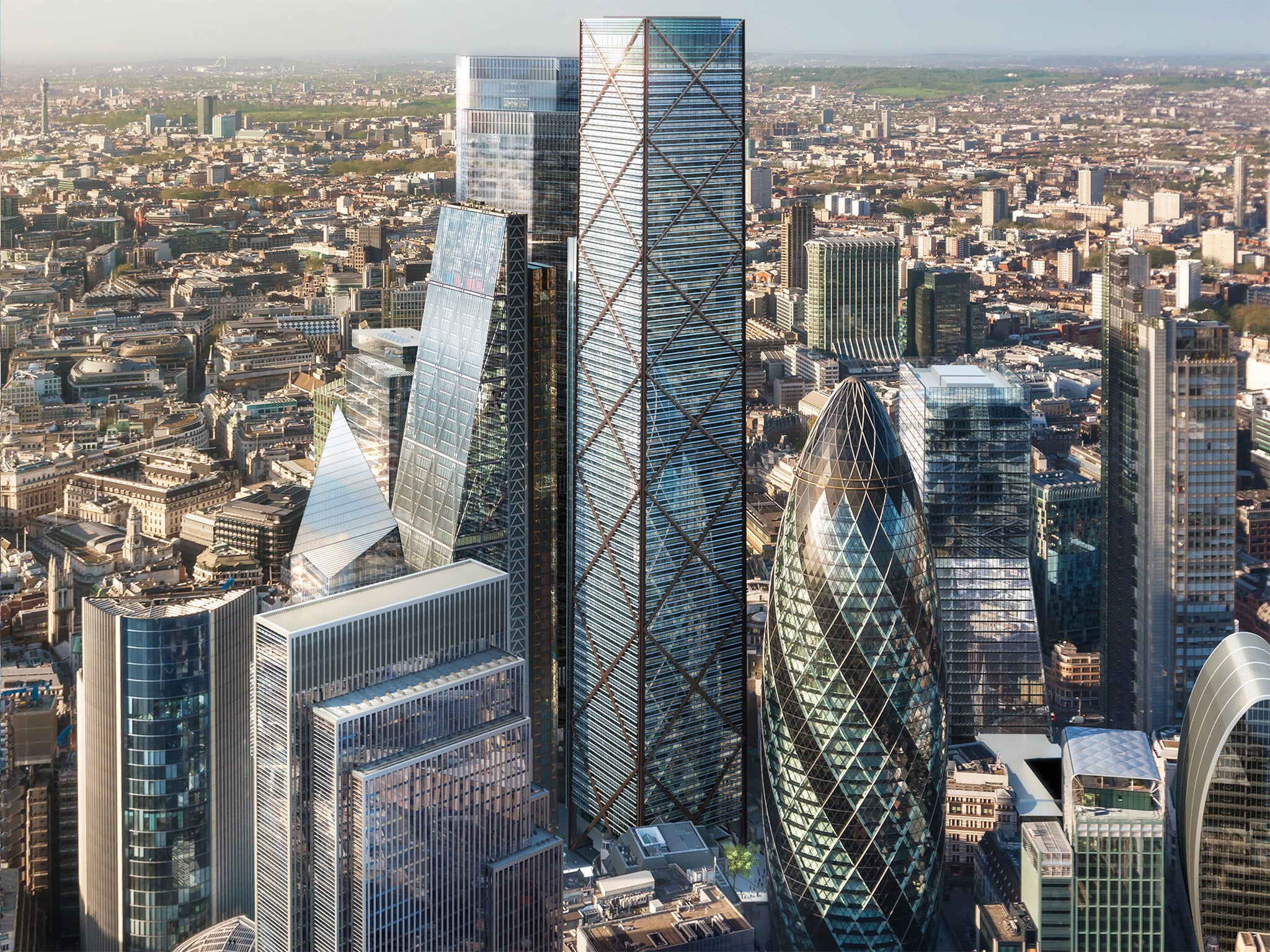London's new skyscrapers 'inflict serious harm' on capital's historic landscape, heritage watchdog warns
Architects have unveiled plans for One Undershaft, a 310m tower which would be the tallest so far in the City of London

The mushrooming of skyscrapers across London and other cities is threatening to destroy Britain’s historic urban landscape, the Government’s heritage watchdog has warned.
Historic England (HE), the body in charge of conserving the built environment, said that the positive impact on city life of tall buildings was being replaced all too often by skyscrapers which inflict “serious harm” by swamping their surroundings.
More than 70 tall towers are currently being constructed in London alone, prompting fears from conservation bodies and campaigners that the capital’s status as a low-rise city is being sacrificed in a dash by planners to meet demand for space and by developers to capitalise on soaring property prices.
Architects this week unveiled plans for One Undershaft, a 310m-high tower which if built will be the tallest skyscraper so far in the City of London and only slightly shorter than the Shard at London Bridge, the capital’s highest building. Its 73-storeys would dwarf other landmarks, including the 180m Gherkin.
HE, formerly English Heritage, today issues updated advice to planners and developers to warn that the proliferation of skyscrapers risks compounding a poor record with towers already built across London and other cities.
The guidance states: “There have been many examples of tall buildings that have had a lasting adverse impact through being unsuitably located, poorly designed, inappropriately detailed and badly built and managed.”
The Independent has obtained a letter sent this week by HE to developers behind another proposed skyscraper in the Paddington area to the west of central London.
Designed by Italian architect Renzo Piano, the creator of the Shard, the £1bn, 224m-high Paddington Tower would be the fourth highest in the capital and the first of such scale in that part of London.
In its pre-application advice to the developers, HE states that based on the details available it has “very serious concerns indeed” about the cylindrical tower and its impact on the landscape, including views from Hyde Park and Regents Park.
The robustly-worded letter states: “A building of this scale in this location threatens harm, some of its substantial, to many designated heritage assets across a wide geographical area, including listed buildings, registered historic parks and conservation areas.
“If permitted, this building would be the beginning of a permanent change in the character of a large part of London.”
Sellar Property Group, the developer behind the Paddington scheme, said: “We believe we all have the best interests of London at heart, and we will be working with all stakeholders including Historic England in order to achieve the best result for Paddington and London.”
Mr Piano recently defended his scheme, pointing to the success of the Shard in attracting redevelopment to the London Bridge area and arguing that the capital must decide how it meets burgeoning demand to accommodate growing numbers of residents and workers.
He said: “Cities face a choice of building up or building out. There’s nothing wrong with a tall building if it gives back more than it receives from the city.”
The heritage watchdog said tall buildings can represent “the best of modern architecture” and it encourages them where they are well designed and offer public space in an appropriate area. London mayor Boris Johnson has been an enthusiastic backer of high towers, saying they are a key part of the answer to the city’s need for residential and office space.
But HE warns that recent experience shows that poorly-designed buildings have been given permission and there have been examples of planning creep where single skyscrapers have led to clusters of towers where they were not envisaged.
Among the structures that HE has objected to in recent years is the Walkie Talkie building in the City, which became notorious for dazzling passers-by and melting cars after its curved shape concentrated reflected sun rays, and the St George’s Wharf Tower in Vauxhall.
Duncan Wilson, HE’s chief executive, said: “London’s historic environment is one of our greatest assets - culturally, socially and economically. It lies at the heart of London’s identity and distinctiveness, and its very success. It is at risk of being badly and irrevocably damaged.”
Last year 70 public figures, including the sculptor Anthony Gormley and the head of the Royal Academy, Charles Saumarez Smith, issued a public statement warning that London’s skyline was “out of control” and facing “irreversible harm” from up to 200 towers that have either been proposed or granted planning permission.
Mr Johnson said that the impact on heritage was considered with all tall buildings. A spokesman said: “Robust planning rules are in place so London achieves the correct balance to ensure tall buildings not only make a positive contribution to the capital’s skyline, but deliver much-needed new homes for Londoners as well work space for the 800,000 new jobs expected over the next 20 years.
“The vast majority of the city does not contain tall buildings and never will do.”
Join our commenting forum
Join thought-provoking conversations, follow other Independent readers and see their replies
Comments
Bookmark popover
Removed from bookmarks